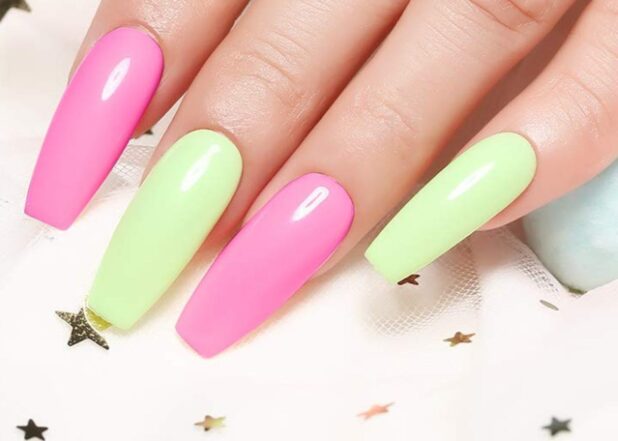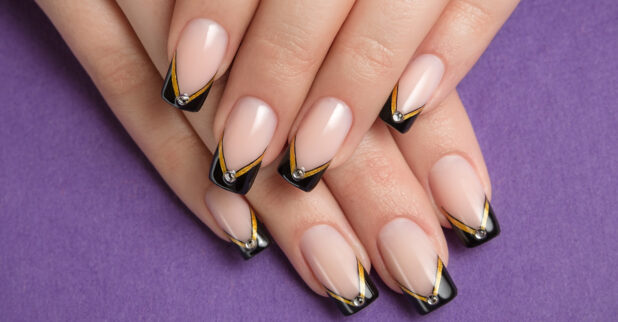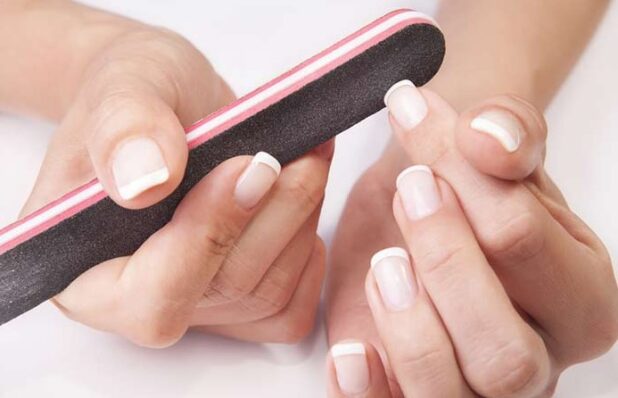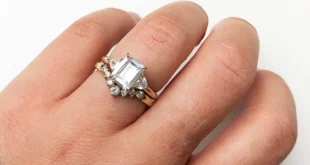The nail industry seems to be as big as ever. Everyone, regardless of their sex or age, seems to be rocking some sort of nail fashion, whether it’s a simple nail polish or something like acrylic nails. However, lately, we’ve been witnessing a new trend in the nail world called solar nails, and since we can’t really tell a lot about it simply by looking at the name, we’ve decided to present you with a little head-to-head comparison between solar and acrylic nails. So, without further ado, let’s get started!
Table of Contents
What Are Acrylic Nails?

You’ve certainly seen and used acrylic nails on more than one occasion, but do you know what they are exactly? To put it as simply as possible, acrylic nails are a mix of powder and liquid monomers. At their starting point, they’re nothing more but a paste or dough. But, once they’re applied to your nail with a brush and then air-dried, they become your nails. Unlike gel nails, these don’t require a lamp to cure and harden, and they can be styled or molded in any way, shape or form you want. They can be small and rounded, or they could be large and pointy – however you like them.
What you can also do with acrylic nails is style them any way you want, too. You can paint them any color you want, you can add little elements to them like zirconia or glitter or whatever else you deem fashionable. Essentially, with acrylic nails, you can let your imagination run as wild as you want.
What Are Solar Nails?

If you don’t know what are solar nails, don’t worry, you’re about to read more about them. Some would argue that solar nails are just glorified acrylic, artificial nails, but even though that may be somewhat accurate, it really isn’t. Solar nails have been designed, engineered and developed by Creative Nail Design, or CND.
If you know anything about nails, you know that CND, you know that they’re a household name in the industry. They have years of experience behind them, and their award-winning nail products have made ladies more than happy for years and years. But, enough about them, let’s talk solar nails now.
Solar nail is a type of acrylic nail that is pink and white in color and about ten times as thick as your natural nail. They can also be shaped and sized any way you like them, just like regular acrylics, but unlike regular acrylics, these resemble French manicure right from the get-go.
What Are The Differences Between Solar And Acrylic Nails?

There are several differences, as well as several similarities between these two. Therefore, we’re going to tackle this step-by-step and outline every single one of them.
Type
As far as type is concerned, both of these are the same. They’re fake nails of acrylic nature, and as far as chemical structure goes, they’re pretty much identical.
Looks
Acrylic nails can be spotted from a mile away. Even when you decide to go for a subtle look, acrylics still look and feel fake and plastic-y, which is not necessarily a bad thing, but that’s the way they look. On the other hand, solar nails look more natural. They have a glossy but natural feel to them and could probably pass as regular, natural nails.
Durability

Both of these are fairly durable, but both can be broken if enough pressure is applied to them. So, protect them, just like you would your own natural nails. However, it is said that solar nails are a bit more durable than acrylic ones.
As far as how long they’ll last – that depends. Both of these will grow along with your nails, and you’ll pretty much have to redo them after two weeks, although some claim that you could pull off three weeks with solar ones.
Furthermore, solar nails won’t change color, fade or turn yellowish when exposed to the UV light of a tanning bed, for instance, but the acrylic ones could.
Cost
None of these come cheap, but that’s expected in the industry. However, when compared head to head, acrylics come out as the winners. Solar nails are generally more expensive than acrylic ones, although the difference isn’t too great. It will still mostly depend on the technician that does the work for you.
Side Effects
You may not know this, but artificial nails can cause some side effects like nail bed damage, skin irritation or allergies. Both of these can cause all of the above, although most of the time, if applied correctly, they won’t cause any.
Curing Technique and Time
As we’ve said, you don’t need a lamp to cure acrylic nails. Both of these air-dry rather quickly, however, solar nails could also be cured under UV light. Furthermore, there is a small difference in time to cure between these two. Generally speaking, solar nails will cure faster than their acrylic counterparts.
Flexibility

Acrylic nails are not known for being flexible. They’re firm and robust. On the other hand, solar nails are a bit more flexible, but they’re still not as flexible like your natural nails.
Style
Acrylic nails can be styled in any way you want. You can change color, style, texture – everything. Solar nails are pretty style-flexible, too, although not as much as the acrylic ones. You won’t be able to achieve some of the extravagant looks with the solar ones like you would with the acrylic ones.
Final Thoughts
As you can see, these two are both fairly similar, as well as fairly different. Which of the two is better, we couldn’t really tell you, but then again – that is not something we’d want to do. Both of these are good and bad in their own way, and it is up to you to weigh those pros and cons and find out which of these work better for you.
And the end of the day, it all boils down to personal preference. Nothing’s stopping you from trying out something new like solar nails, nor is anything stopping you from going back to what you know. Either way, we hope we’ve done a good job of differentiating the two for you, so when the time comes, you can make an easy decision.
 World Magazine 2024
World Magazine 2024






